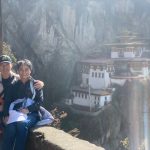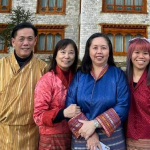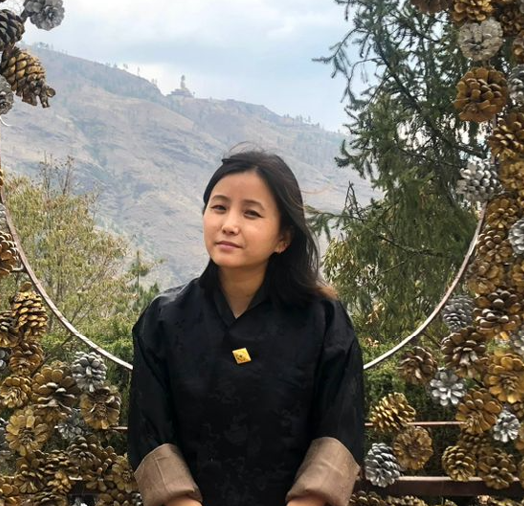India
Trip Overview
India Beckons
- Official Name: Republic of India, Bharat.
- From of Government: Federal republic.
- Capital: New Delhi.
- Population: 1.4 Billion.
- Official Language: Hindi, English, and 21 others.
- Money: Rupee.
- Area: 1269345 square miles.
- Major Mountain range: Himalaya.
- Religion: Multiple but most Hindus.
- India, one of the oldest civilizations in the world, boasts a diverse and multicultural society. The country is a popular tourist destination due to its rich heritage and a multitude of attractions. India’s vast expanse stretches from the snow-capped Himalayas in the north to the tropical rainforests in the south, and it is surrounded by mountains and the sea, giving it a unique geographical identity. As you travel through India, you will encounter various cuisines, faiths, arts, crafts, music, nature, lands, tribes, history, and adventure sports, making it an exciting and enchanting destination. From the grandeur of the Taj Mahal to opulent palaces and forts, India is home to numerous heritage sites that are hundreds of years old. The country also offers a variety of shopping experiences and serene natural retreats, along with the opportunity to indulge in wildlife sanctuaries and adventure sports. India is an incredible and intriguing destination that has something for everyone, from yoga and meditation to trekking in the Himalayas and exploring ancient temples.
Detailed Descriptions
Architectural Wonders
- India has a rich cultural heritage seen in its many attractions, including heritage sites, royal palaces, and ancient temples. The TajMahal is a world wonder that is a major draw for visitors. Rajasthan, Uttar Pradesh, and Tamil Nadu are some of the significant cultural cities in India, each with its unique attractions. Museums and galleries across the country immortalize India’s glorious ancient history and vibrant traditions.
Festivals
India is a country with a diverse population, and as such, there are numerous festivals celebrated throughout the year. National festivals like Republic Day, Independence Day, and Gandhi Jayanti are celebrated with patriotic fervor. Religious festivals such as Diwali, Holi, Eid, Christmas, and others are celebrated according to their respective calendars. In addition to these, there are seasonal festivals that mark new beginnings and are celebrated with great joy across the country. Festivals bring people together, spreading happiness and promoting a sense of unity among different communities.
Dress
- India is a country with a diverse culture that dates back to the 5th millennium BC, where people used to spin, weave, and dye cotton. Over time, the textile industry of the subcontinent expanded as new trade routes were established. Traditional clothing worn by Indian women and men are associated with local culture, religion, and climate. Some of these traditional dresses include the MekhelaSador, SalwarKameez, Churidaar, Anarkali suit, LehengaCholi, Dhoti, Panche, Anchkan/Sherwani, Bandhgala, Sari jama, and Pagri. The cotton industry was very advanced, and some techniques used in the past still survive today. The ancient textile industry traded with China, Southeast Asia, the Roman Empire, the Arabs, and Europe in a lucrative exchange of spices and clothing.
Food
- Indian cuisine is a diverse blend of culinary influences and traditions from all over Asia, featuring staple foods such as rice, millet, lentils, and a variety of spices including chili peppers, cumin, and turmeric. The cuisine varies widely between North and South India, with North Indian dishes tending to be rich and spice-forward, while South Indian cuisine features coconut milk-based flavors and thinner sauces. The cuisine is generally vegetable-forward and includes plenty of vegetarian and vegan options, while proteins like lamb, fish, and chicken are also favored. Complimentary sides like papadum, raita, and chutneys are an important part of any Indian meal.
Flora
India has a diverse range of vegetation due to its varied climatic conditions. It can be divided into eight regions based on flora, including the western and eastern Himalayas, Assam, Indus plain, Ganga plain, Deccan, Malabar, and Andaman. Each region has its unique set of trees and vegetation. India is ranked tenth in the world and fourth in Asia in terms of plant diversity. The Botanical Survey of India has described over 46,000 species of plants from about 70% of the geographical area surveyed so far. Out of these, 1,336 species are considered vulnerable and endangered, and 20 species are possibly extinct.
Best Time to visit India
- The ideal time to visit India is from October to March, as the weather is generally warm and dry, with clear skies in the north. December and January can be cooler with fog, and the higher Himalayas are very cold but offer great views. April and May are cheaper but have higher humidity and thunderstorms. Ladakh is best visited from June to September, while the monsoon season ends in November, making it the best time to visit India’s southern states.
Frequently Asked Questions
- What should you pack?
Answer: It all depends on your destination and season of travel. Much of India has a patchy climate: warmer in the days and cooler in the evenings. A light jacket or layering is best to accommodate the varying temperatures. Also, we suggest shoes that are comfortable for walking, including sandals and tennis shoes. A head cover may be required for women and men at certain sacred sites and places of worship.
- Why Should I visit India?
Answer: Affordability – India is considered one of the top 15 most affordable destinations in the world.
People – Indians are very friendly and enjoy engaging with foreigners.
Ease of Communication – Most Indians can speak at least conversational English and internet/Wi-Fi/cell service is widely available.
Something for Everyone – India offers history, culture, architecture, adventure, Yoga, Ayurveda, cuisine, beaches, Himalayas, wildlife, backwaters, shopping, festivals, music, dancing, religion and spirituality – just to name a few!
- When is the best time to travel?
Answer: It really depends on your destination, activities and season of travel. In much of Northern and Central India, the favored time to visit is from October – March, when the weather is most mild. In Southern and Eastern India, it is contingent on the monsoon season. Our destination specialists will recommend certain travel times after learning more about your preferences.
- Do Indians speak English?
Answer: Yes, English is commonly spoken throughout India. In fact, most children, particularly in the cities, learn English first in school. It is the most important language for commercial, national, and political status. Hindi is the national language and primary tongue for 40% of Indians. However, there are 21 other official languages, including Gujarati, Tamil, Punjabi and Sanskrit.
The official language in India is Hindi.
- Is a Visa required to visit India?
Answer: Yes. India offers an electronic tourist visa on arrival (TVoA). Applicants of the eligible countries may apply online a minimum of four days in advance of the date of arrival with a window of 30 days. Example: If applying on 1st Sept, you can select an arrival date from 5th Sept to 4th Oct. This process is only valid for single entry and the visa validity will be 30 days from the date of arrival in India. For more information, please visit the India Electronic Travel Authorization.
If your trip exceeds 30 days in duration, or if you are planning to re-enter India after visiting other destinations, you will need to complete an application from Cox & Kings Global Services. Applications can be completed online.
- Is India a safe country?
Answer: For its size, India has a very low crime rate and is generally a safe country. However, as with any international travel, please be aware of your surroundings. Always make sure your purse is zipped and wallets are in sealed pockets. In the markets, be vigilant of pick-pockets and distraction scams. Additionally, at the train/bus stations and airports, monitor your luggage at all times.
- Should I visit North India or South India?
Answer: This depends on your interests and preferences, but most Goway passengers will visit the north on their first trip to India to see the TajMahal and the main sites in Rajasthan and Varanasi. South India can be done as an extension or a separate trip altogether. The most common places Goway passengers visit in southern India are Goa for the beaches and Kerala for a houseboat experience, but Chennai and Bangalore are other options. India is a large country so the climate, landscape, and culture vary depending on which region you visit.
Trip Review
Tour guide Pema Letho made the Bhutan trip both informative and entertaining. He always has some interesting stories to...

Mei Wu
It was truly an eye-opening visit to Bhutan, and we had a really enjoyable experience! The 7D6N itinerary was...

ww weiting
We had a very good experience for our first visit to Bhutan. The itinerary was very complete and our...

Jamie Tan
Great sights, great food, great iternary, awesome guide. A totally unexpected enjoyable experience in Bhutan.

Laura Lim
My trip to Bhutan was a great experience for me. Amazing country with a lot of fresh air; people...

Marie
I just returned from a 7-day tour of Bhutan and had the privilege of Guide Dago Tshering and driver...

Adrian Loo
Trip Facts
Districts India
Venue Delhi
Accomodation Hotel

 Districts India
Districts India Accomodation Hotel
Accomodation Hotel






